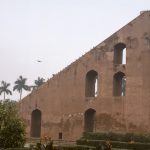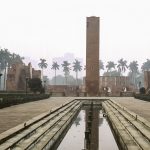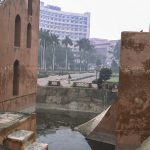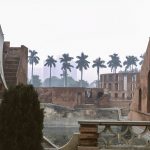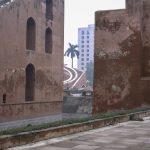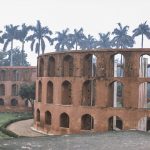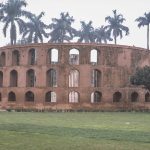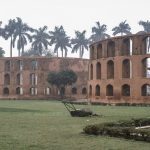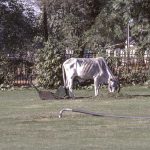Delhi – Jantar Mantar
Situated near the Imperial Hotel, the Jantar Mantar is an astronomical observatory built in the 18th century by Maharaja Jai Singh II of Jaipur. Apparently he also built similar installations at Jaipur, Mathura, Varanasi and Ujjain with that at Jaipur being the most comprehensive. The name is a corruption of Yantra Mantra meaning a calculating instrument.
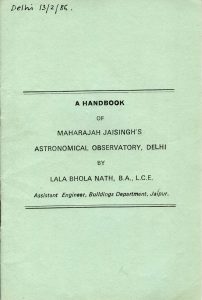
I was not needed on the Thursday afternoon of the meeting and met Nicky in the Lodhi Gardens. We tried to go to the Jami Masjid, the great Mosque in Old Delhi but were stopped by a road block due to violent riots taking place in Old Delhi. These riots during our stay stopped us exploring Old Delhi and monuments there such as the Red Fort. However I used the afternoon to visit the Jantar Mantar.
A small publication: “A Handbook of Maharajah Jai Singh’s Astronomical Observatory, Delhi” by Lala Bhola Nath, an Assistant Engineer at the Buildings department, Jaipur, gives an account of how the instruments were used.
The Samrat Yantra, “main instrument”, is a very large sun dial which can provide the time of day correct to half a second (Wikipedia). The central gnomon is about 70 feet tall. The mathematics that must have been involved in building the quadrants to either side, and indeed the other instruments, is impressive. Photos of the Samrat Yantra…
The Rama Yantra allows the altitude and bearing of the stars to be determined by siting from within one of the two cylindrical buildings. The two buildings are complementary in that the viewing windows in one correspond to the pillars in the other. Photos of the Rama Yantra…
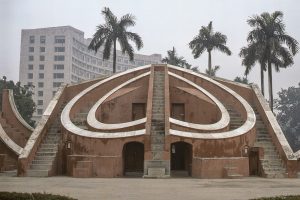 The Misra Yantra, “mixed instrument”, has gnomons and quadrants like the Samrat Yantra but situated to either side of the central instrument which gives the time when it is noon in cities where major observatories were situated.. Notke in Japan, “Saritchen on Pik Island in the Pacific” (Indonesia?), Zurich, and Greenwich.
The Misra Yantra, “mixed instrument”, has gnomons and quadrants like the Samrat Yantra but situated to either side of the central instrument which gives the time when it is noon in cities where major observatories were situated.. Notke in Japan, “Saritchen on Pik Island in the Pacific” (Indonesia?), Zurich, and Greenwich.

